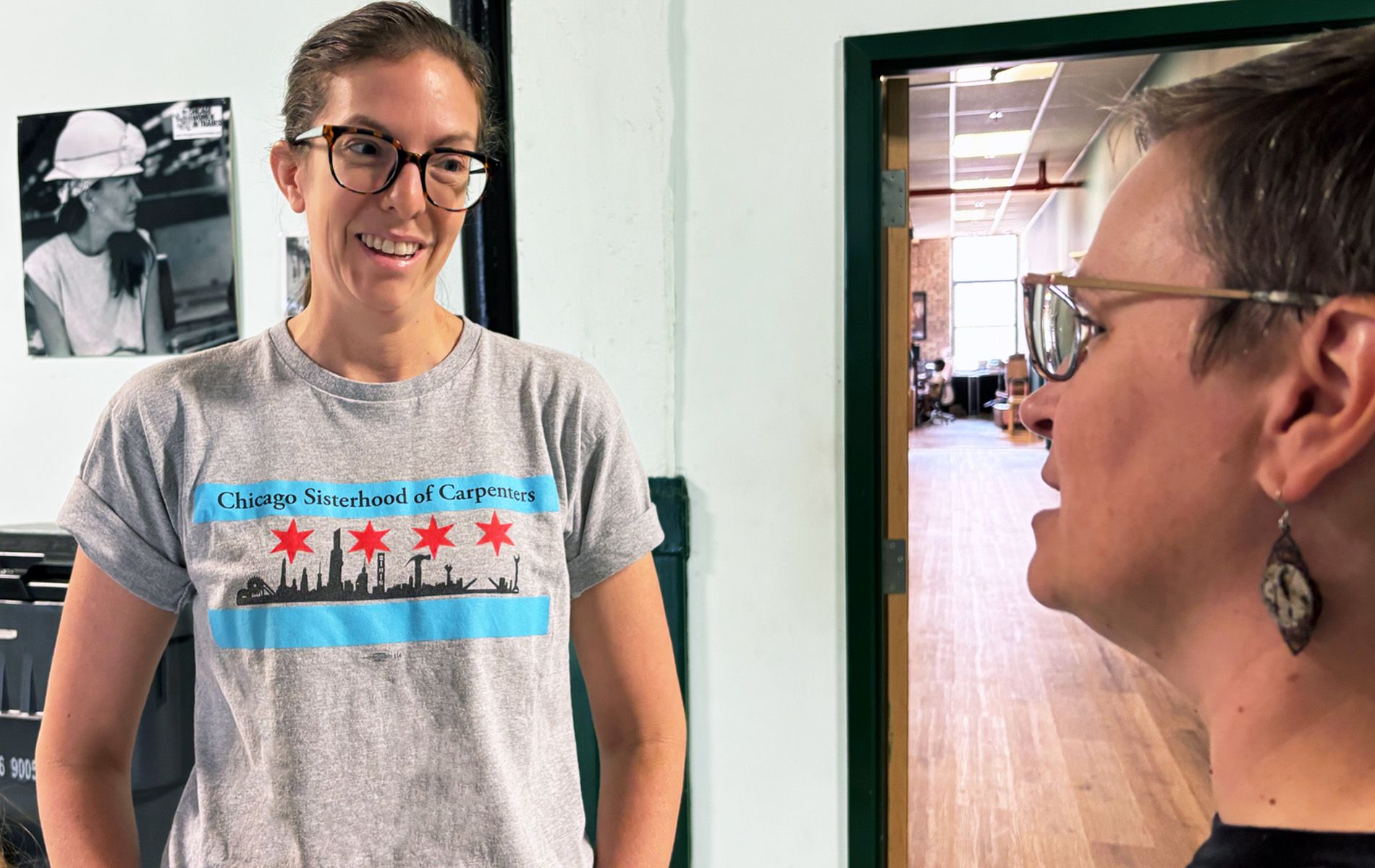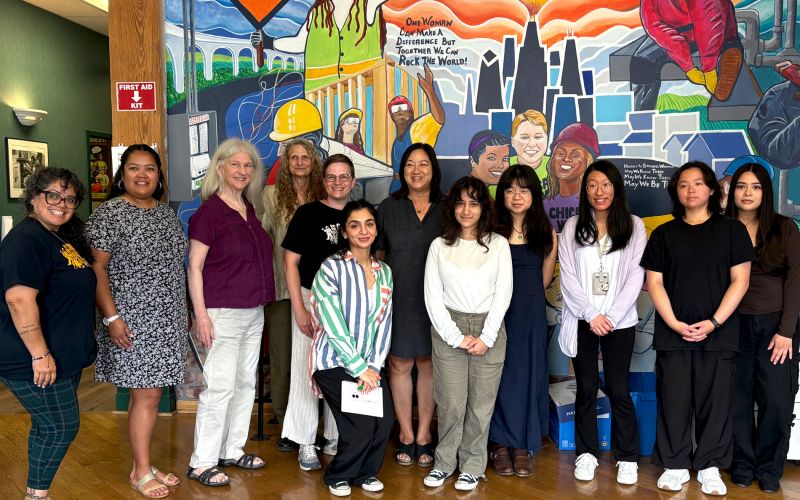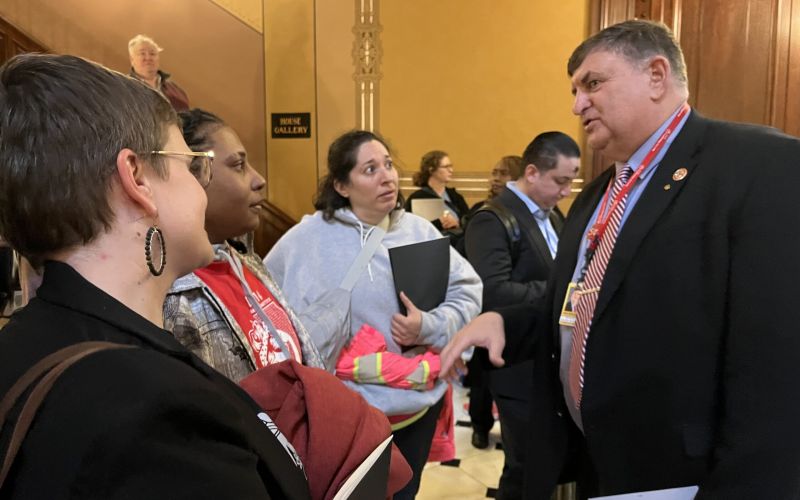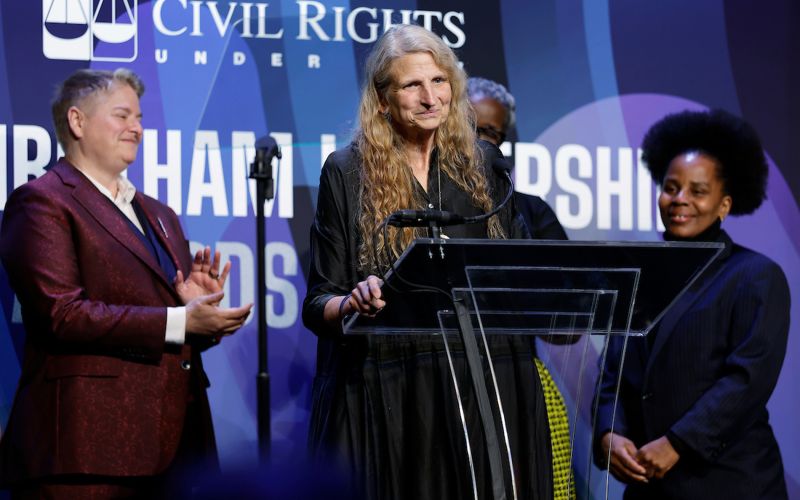July 2, 2025
Breaking Down Barriers: A Career Developer’s Work to Change Perceptions in the Trades

Renee Richardson knows firsthand the challenges tradeswomen face—and she’s working to change the industry one placement at a time
As a career developer at Chicago Women in Trades, Renee Richardson bridges the gap between skilled tradeswomen and the contractors who need them — a role that demands equal parts persistence, relationship-building and advocacy.
Like many of the women she now serves, Renee faced the same barriers she now helps others overcome. Today, she serves as the liaison between tradeswomen seeking meaningful careers and contractors learning to look beyond outdated assumptions about women’s capabilities.
Q: How did you first discover the trades?
“I was doing art framing at the time, and I hadn’t gotten a raise in over five years. I thought there had to be something better. My mom is a teacher—she was in a union. My dad worked for Caterpillar—he was in a union. I knew about the union benefits, and I thought that if there’s an opportunity to join a union, it’s worth at least looking into. With the art framing, I was working with my hands and using saws, so I wasn’t scared of using saws. I was just really frustrated because it was like a dead-end career. I learned about CWIT from a friend of mine. She said, “Did you hear that you can learn how to weld for free in Chicago?” And I thought that it sounded amazing. However, the welding program was held during the day, and I was working during the day. But, I noticed they had an evening construction class, so I signed up and graduated from the Technical Opportunities Program in 2018.”
Q: How did your career unfold?
“After the TOP class, I tested for five different unions. The first people who called me back were Mill Cabinetry, so that’s what I went with. We got three weeks into the pre-apprenticeship, and then COVID hit, so they shut down the school. They ushered us into the union with only three weeks of experience. And I was like, what are we supposed to do now? Nobody was hiring, and they’re not going to hire somebody who doesn’t know what they’re doing. I had quit my job to do this. Fortunately, I had someone help me get set up with unemployment. Meanwhile, I just kept cold-calling shops in an effort to find anything. I got a job right before Christmas 2020, and they had me working 12 hours every day through Christmas.
Technically, I worked as a union carpenter for two years. But I was living at work, and I wasn’t making very much money. I learned a couple of things, but it was a lot of me begging for work from anybody. There were some days when I would just sweep the floors for 10 hours.”
Q: How did you come to join the staff at Chicago Women in Trades?
“The fact that I was spending so much time at work and making so little money, I thought there had to be something else. Rebuilding Exchange had a listing for their pre-apprenticeship program, and they were looking for a liaison between the unions and the students to get them in the door for training. I thought, well, I know how to talk to union people. So I applied for it. I got that job and was there for six months. Then I saw the listing for CWIT, and I knew that’s really where I wanted to be. I applied and got the job, and that was almost three years ago.”
Q: What do you do as a career developer?
“It’s a lot of talking to contractors, talking to students, trying to find employment connections. But there are a lot more people looking for jobs than there are people hiring. It’s super exciting when I get someone placed, but then there are 10 people behind that one person who are still looking for work. A lot of the rejection that they’re getting when trying to find work is also happening for me. So it’s just trying to wiggle my way in there, and it’s a lot of building relationships with people for them to pick somebody up eventually.”
Q: What are the most significant barriers you encounter when trying to place women in the trades?
“People just assume that men can lift more or are just more physically able. The misconception is that women can’t do hard labor, and it’s going to be a burden on the employer to hire a woman because she’s not going to produce the same amount as a man.
Women have to go above and beyond. You have to find an employer that has hired a woman who did an amazing job, and the expectation is that if they don’t do that, then they’ve just wasted their time hiring a woman. When a man goes to the job site, they’re going to have a different experience, which means that they may be trained in different facets, but a woman could be pigeonholed to only do menial stuff, which is a detriment to everyone– the employer and the organization and the individual–no one is winning.”
Q: What do you want contractors to understand about women entering the trades?
“It’s all about following directions, and anybody can build muscle. It’s about showing up and working hard. I feel like that’s not a gender-based issue. I have qualified people who are ready to go. But there’s a lot of pressure on the people that I refer—on the individual—to just be the best they’ve ever had. And not everybody can do that or has the support system. And then, when it falls short, the employer doesn’t want to talk to me anymore.
They can have one positive experience with a tradeswoman, and that’ll yield positive results. Or they’ll have one experience with a tradeswoman that doesn’t live up to their expectations, and then that relationship suffers.”
Q: What keeps you motivated?
“My work is purpose-driven. Everybody who works at CWIT is in this together, and we’re all just trying to reach the same goal. Just knowing that there are so many people behind this mission, I feel like that keeps everybody going. And it’s very exciting when someone gets hired. I mean, these are good wages, and women should have them too.
But women must be passionate because if you’re going in for the benefits, there are many things that you have to deal with. You have to really want it. And you have to want it every day. Women also need a support system of people who are behind them and encouraging them. This is not for the faint of heart. The people who pursue and stick with the trades are tough. They’re very tough, they have perseverance, and they’re just badass.”


